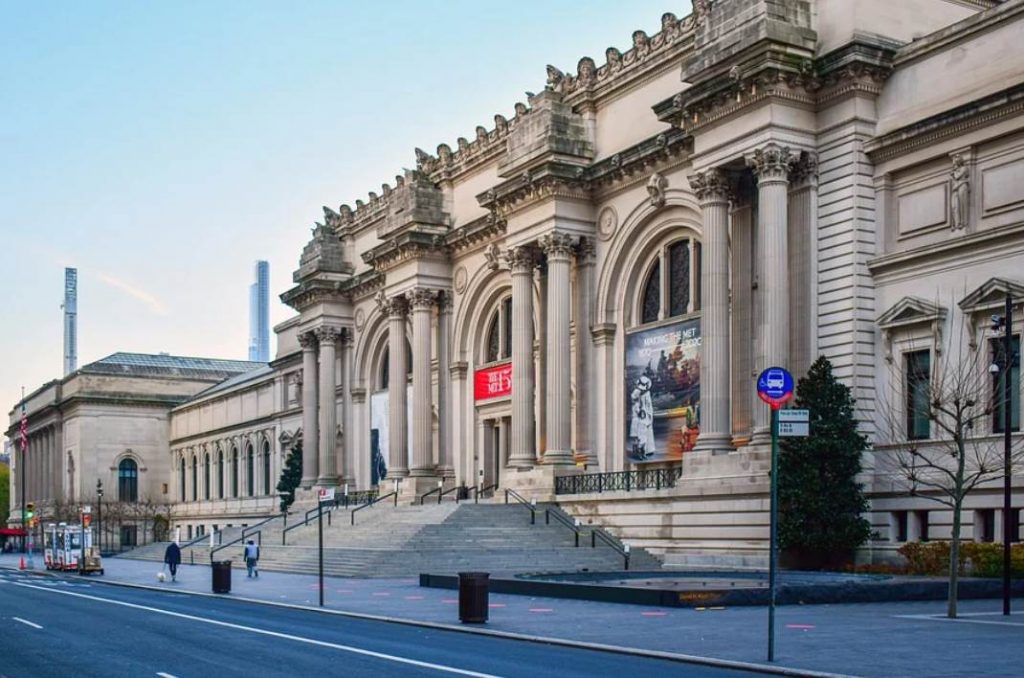A renowned English artist was born in Paris and spent most of his career in France. He became one of the leading figures of the Impressionist art movement.
He was one of the most fervent proponents of painting outdoors and his Impressionist paintings are therefore some of the most exemplifying artworks of the movement.
In this article, we take a closer look at some of the most interesting facts about The Bridge at Villeneuve-la-Garenne by Alfred Sisley, one of the artist’s most remarkable masterpieces.
1. It was completed shortly after the conclusion of the Franco-Prussian War
Alfred Sisley (1839-1899) was an Engish artist who was born in Paris. His family was relatively wealthy as his father had a successful business in the silk industry.
Although he studied business in London between 1857 and 1861, he never managed to complete it and returned to Paris to study art at the prestigious École des Beaux-Arts.
He developed his distinctive Impressionist style in the 1860s after meeting other important Impressionist artists such as Claude Monet (1840-1926) and Pierre-Auguste Renoir (1841-1919).
The Franco-Prussian War between 1870 and 1871 changed everything for the artist because his father’s business went bankrupt and he had to make a living selling his paintings.
Landscape paintings weren’t on the highest shelf of sale value so he struggled for the rest of his life to make a decent living.
He completed The Bridge at Villeneuve-la-Garenne in 1872, shortly after the devastating event that radically changed his life.
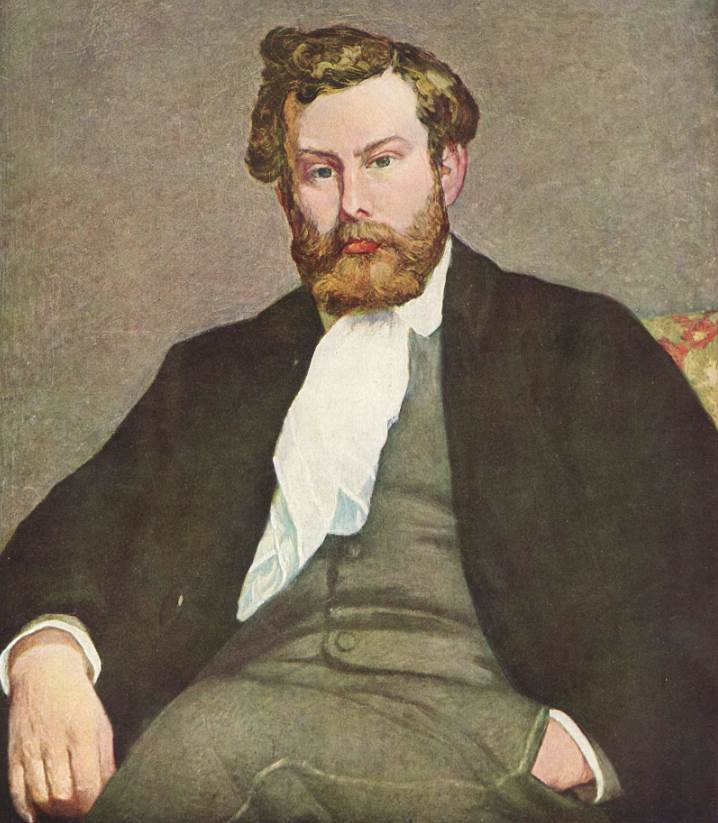
2. It depicts a bridge on the northern outskirts of Paris
The painting depicts a suspension bridge in Villeneuve-la-Garenne, a northern suburb of Paris, France.
When Sisley completed this painting, this bridge was located in a rural area in the French countryside. This little town was nothing more than a fishing community along the Seine River.
A few scattered houses along the Seine River and this bridge were just about the only buildings that could be found here.
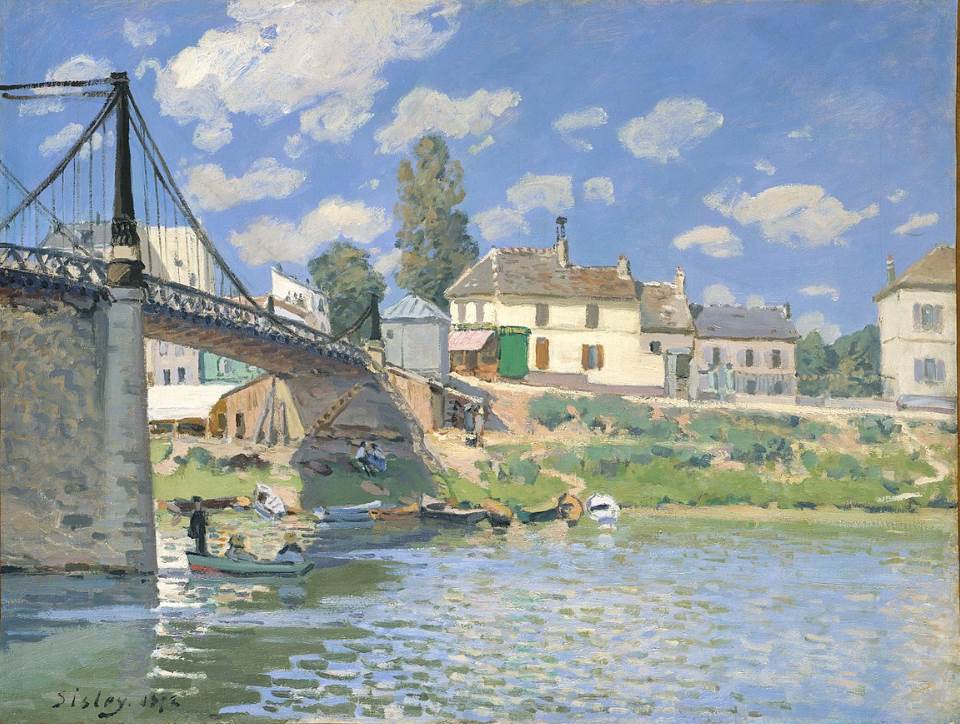
3. The suspension bridge in this painting dates back to the year 1844
The suspension bridge in the painting was constructed in 1844 and connected the small town of Villeneuve-la-Garenne with the town of Saint-Denis.
Equally fascinating is the fact that Saint-Denis, a densely populated part of the huge metropolitan area of Paris today, was located in the French countryside as well at the time.
Not much changed in the town itself for several decades, except that the old suspension bridge was replaced with a firm box-and-girder bridge in 1903.
The town gradually expanded in the early 20th century and eventually immerged into the urban landscape of Paris as well.
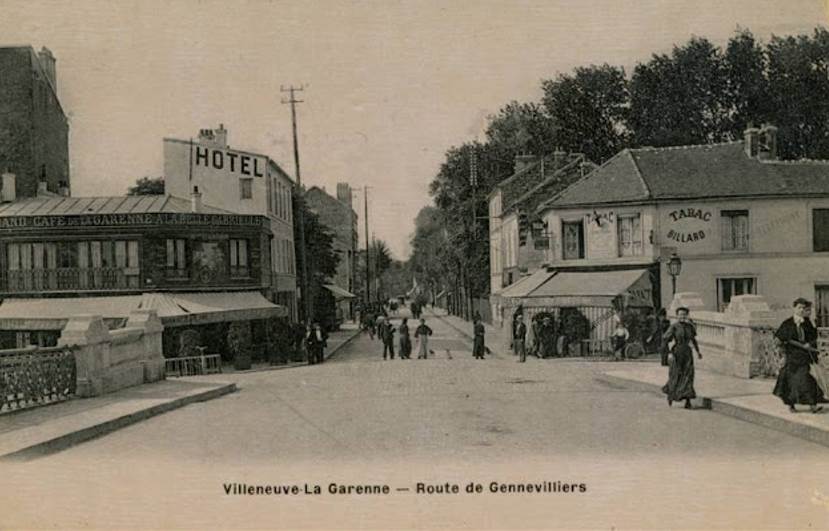
4. None of the buildings in the painting still stand here today
The entire village was flooded in 1910 and this is when serious changes were made. The tobacco store and hotel survived this event and both World Wars as well.
Postcards from the 1940s and 1950s are a visible reminder of the fact that, although the town had expanded significantly, its layout didn’t change all that much.
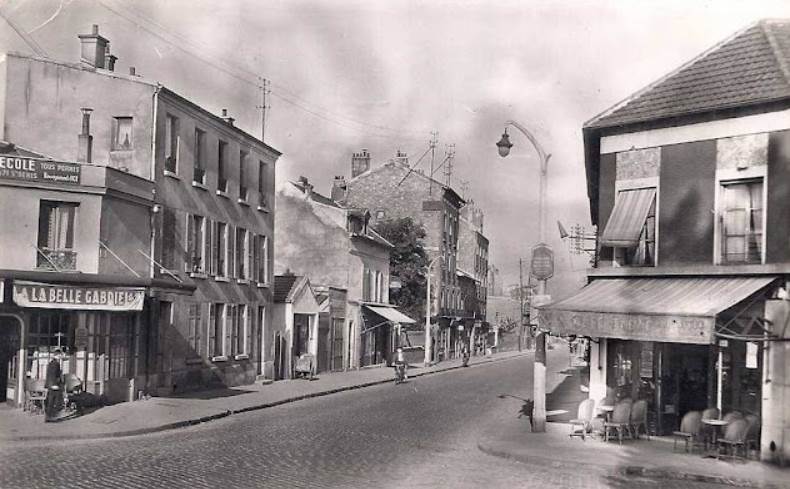
Looking back a the pictures of the old days, The Bridge at Villeneuve-la-Garenne by Alfred Sisley brings back a sense of nostalgia for the old days.
Today, the town is full of concrete blocks with shabby apartments, a typical Parisian suburb, and just about all former residents have moved out.
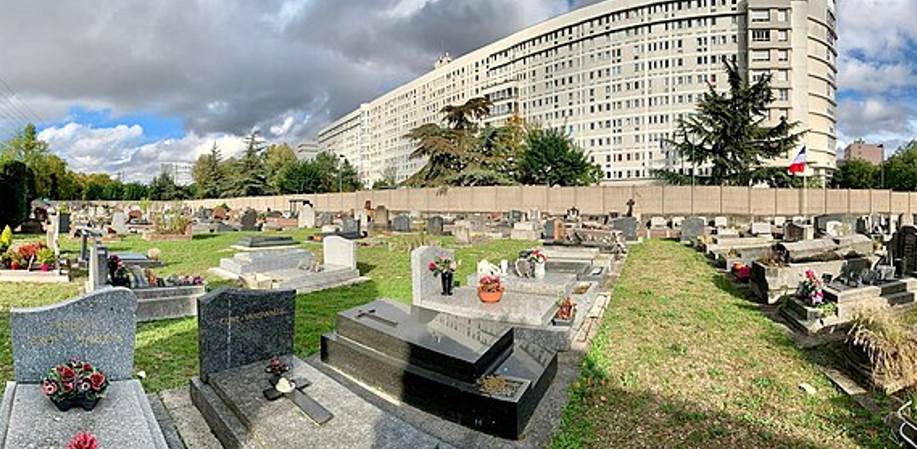
5. Sisley magnificently captured the liveliness of this rural area north of Paris
Gone are the days that Parisians came to the countryside just north of the crowded city to enjoy a boat ride on the River Seine.
Sisley witnessed people having a good time often when he painted one of his many works depicting bridges in and around Paris.
He included several people having a good time near the bridge and magnificently captured the sunlight on the after with a large number of flat brushstrokes.
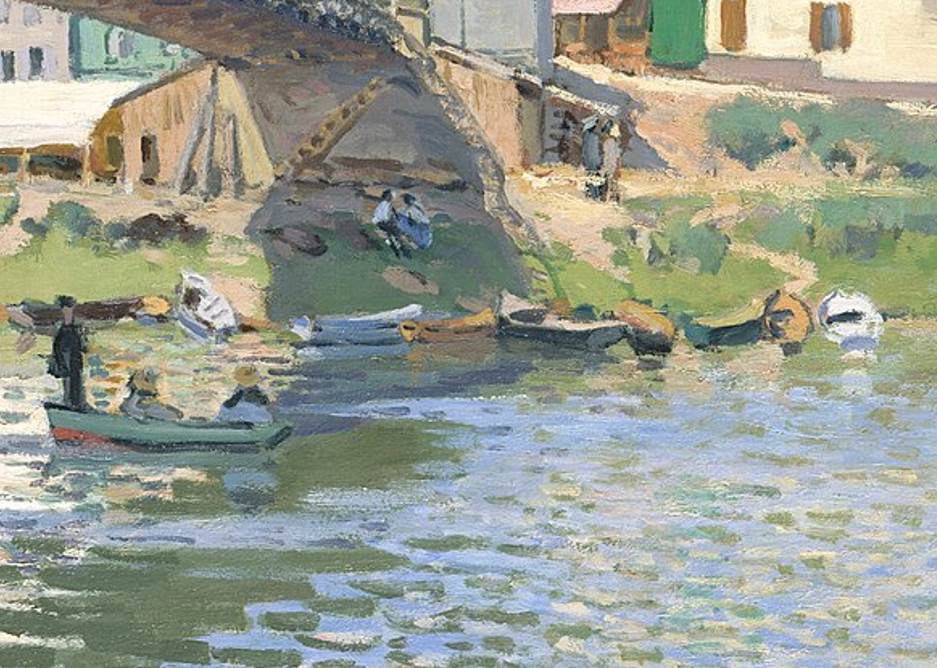
6. It’s one of the paintings that Sisley managed to sell to make a living
Alfred Sisley had to scrape the bottom of the barrel after his family’s business went bankrupt so he produced paintings with the sole intention to sell them.
He had no choice because he married his wife Eugénie Lescouezec (1834–1898) in the late 1860s. The couple had two children, Pierre (born in 1867) and daughter Jeanne (born in 1869), so the artist needed to work hard to support this family.
Although he remained relatively poor for the rest of his life, he did manage to sell many of his paintings, including this work, which was bought by art dealer Paul Durand-Ruel on August 24, 1872.
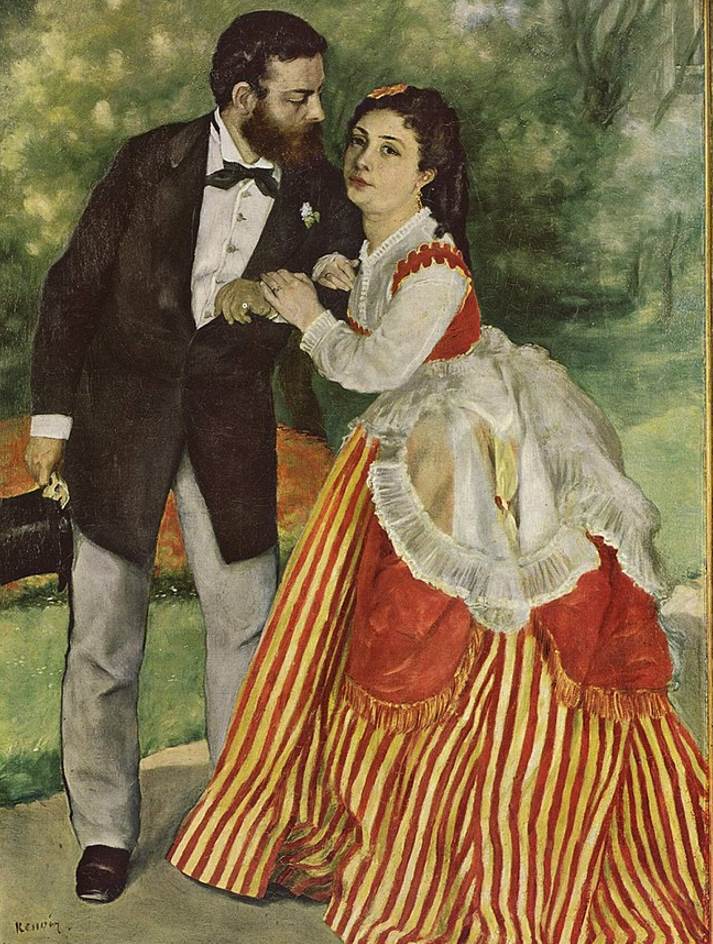
7. How big is The Bridge at Villeneuve-la-Garenne by Alfred Sisley?
Being prolific and producing monumental works of art doesn’t go hand in hand. That’s why Sisley chose to produce relatively small paintings so he could quickly sell them.
The Bridge at Villeneuve-la-Garenne by Alfred Sisley is a small oil on canvas painting that has dimensions of 49.5 x 65.4 centimeters (19.5 x 25.75 inches).
8. Where is the painting located today?
Paul Durand-Ruel (1831-1922) didn’t hold onto the painting for very long because he sold it to French operatic singer Jean-Baptiste Faure (1830-1914) on 15 April 1873.
It was passed on to Faure’s son’s wife who remarkably sold it once again to art dealers Georges Petit and Durand-Ruel in 1919.
It changed hands several times and eventually ended up in New York City where it was donated to the Metropolitan Museum of Art by its owners Henry Ittleson Junior and his wife in 1964.
Today, the painting is still part of the collection of the MET, one of the largest and most popular museums in the United States.
